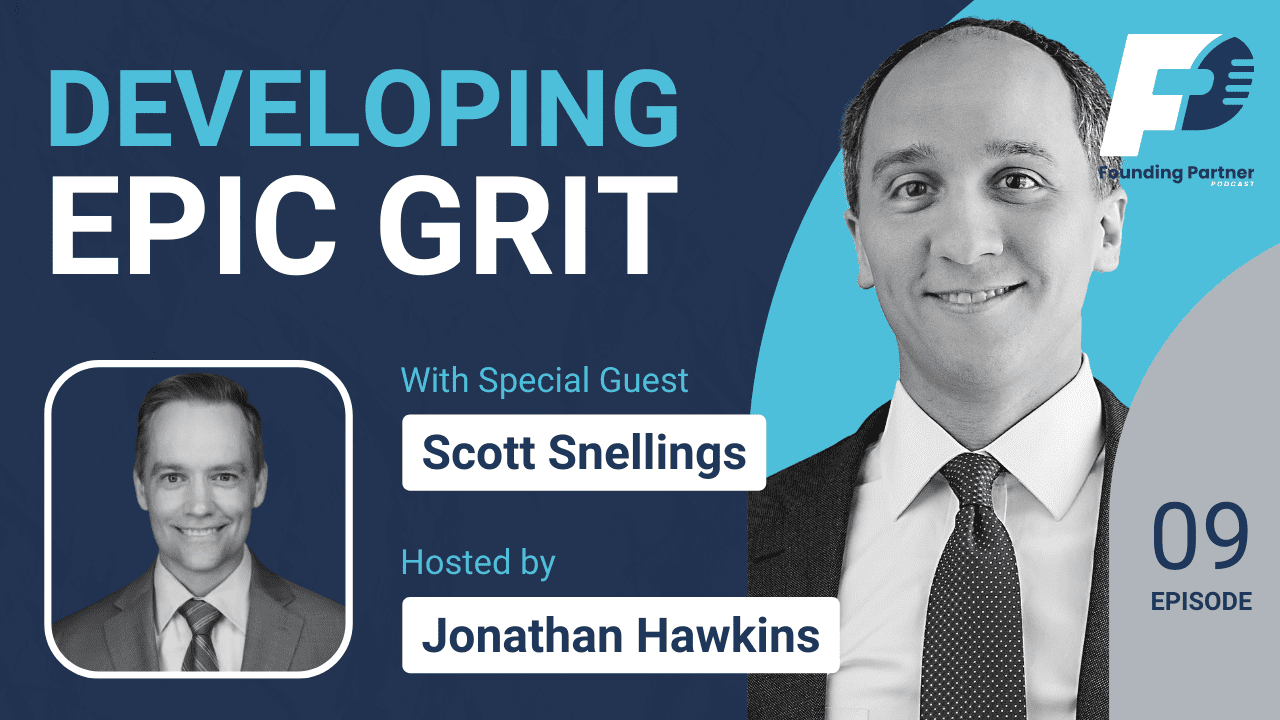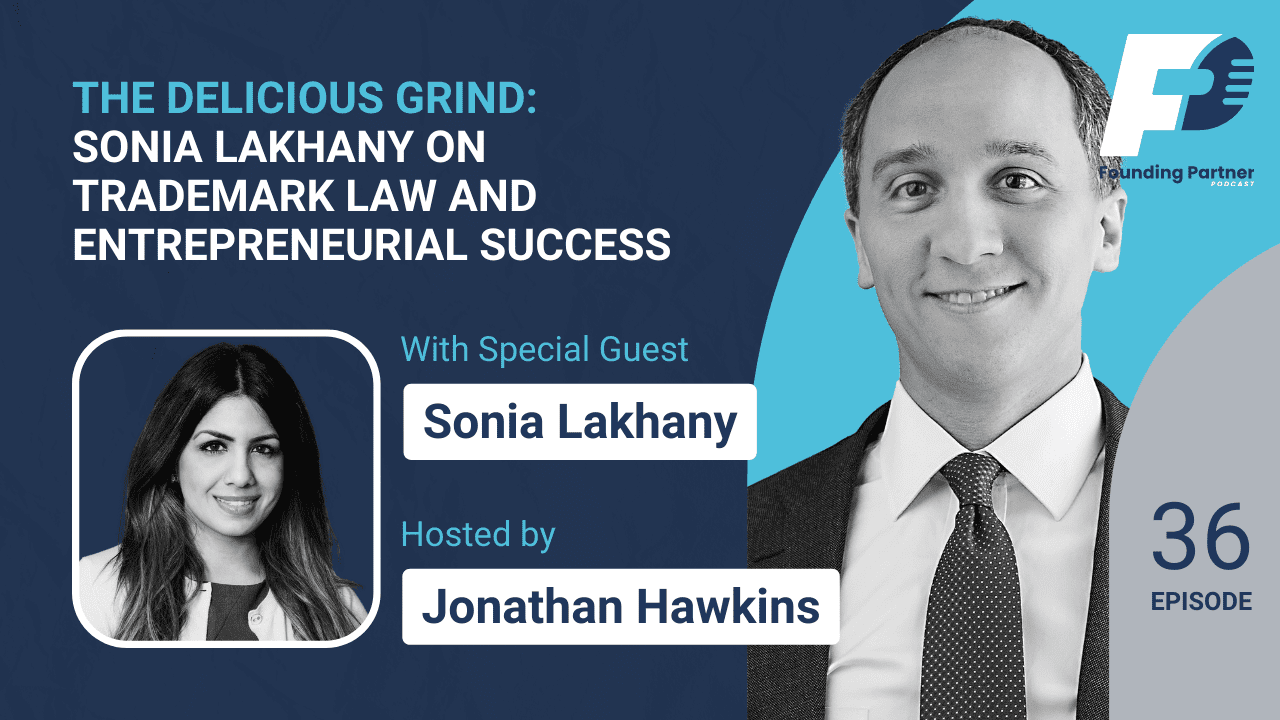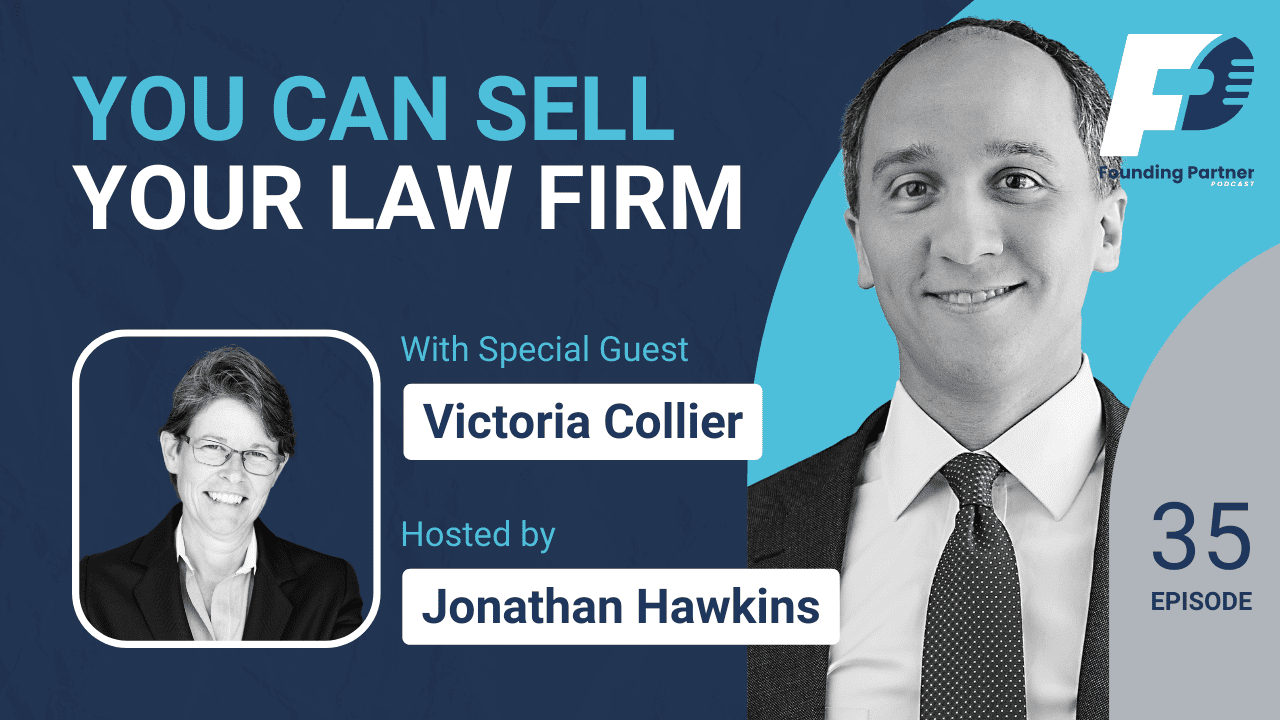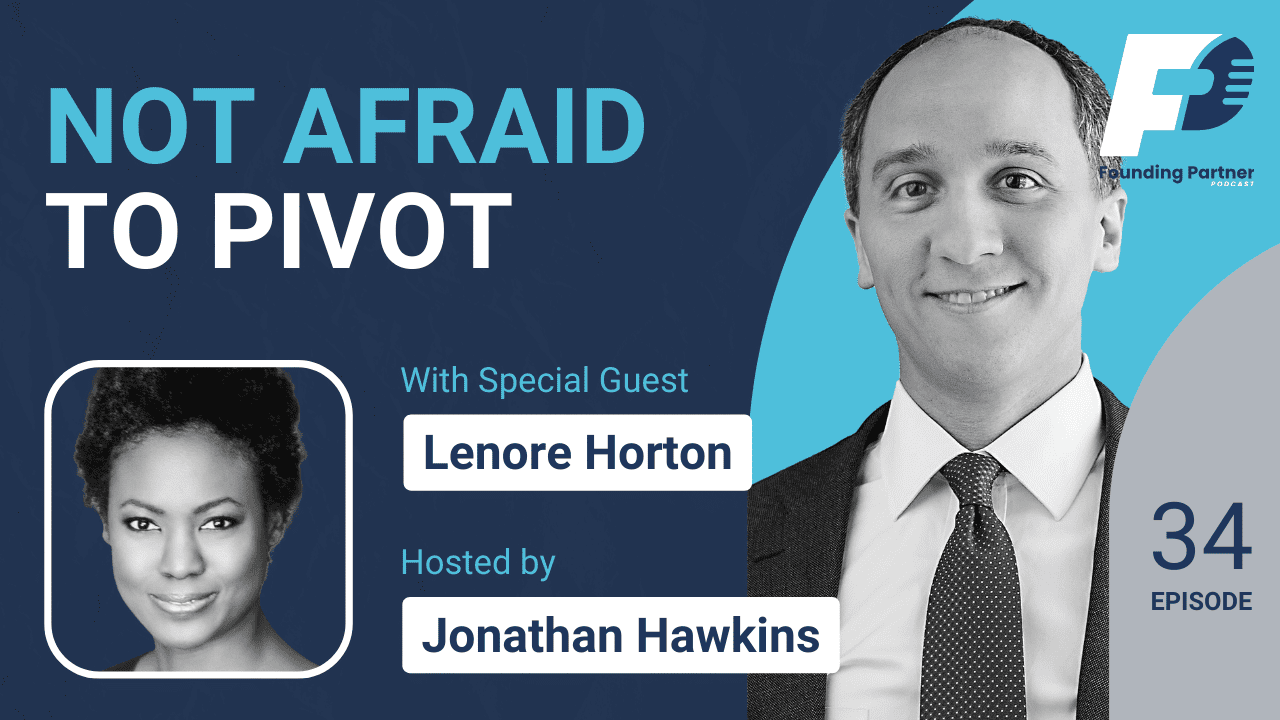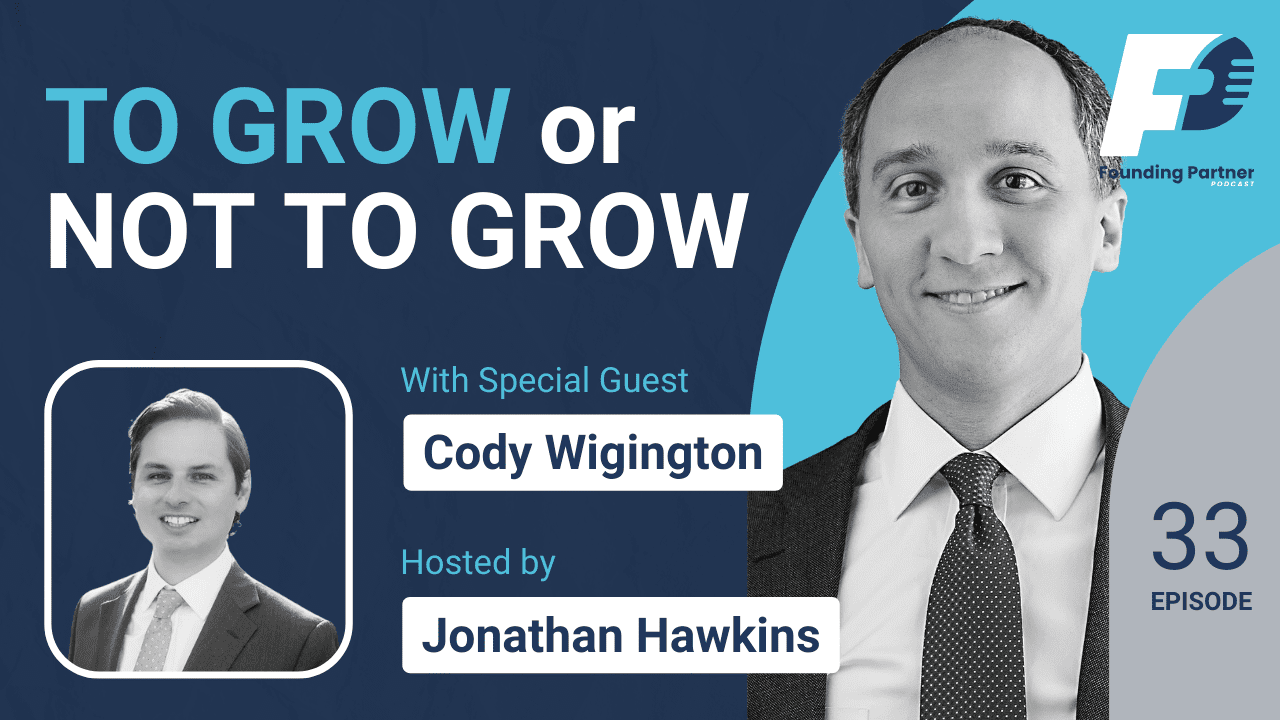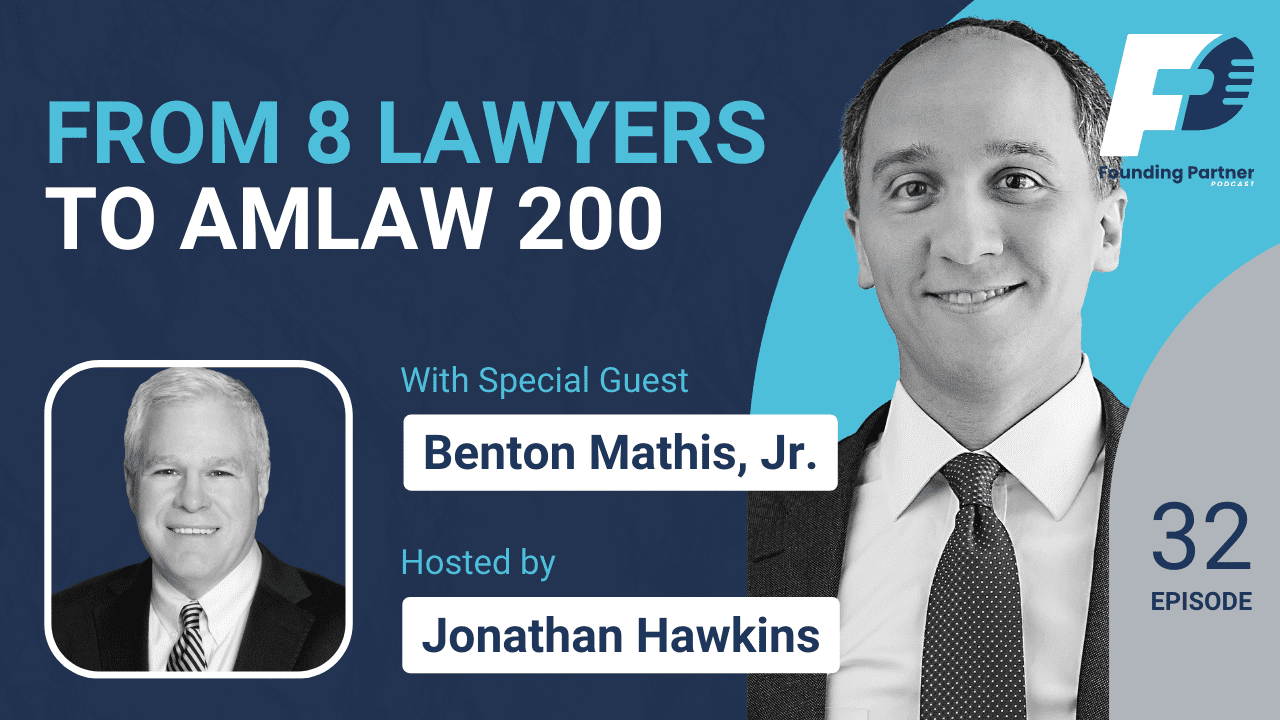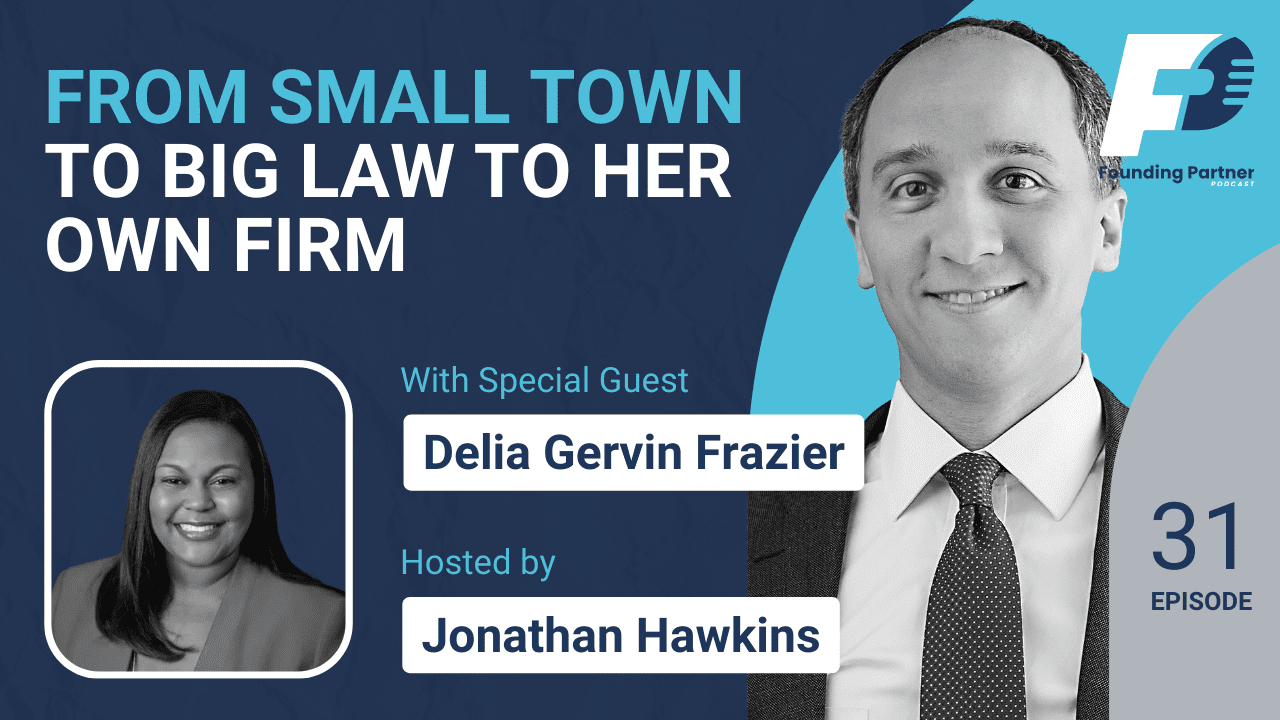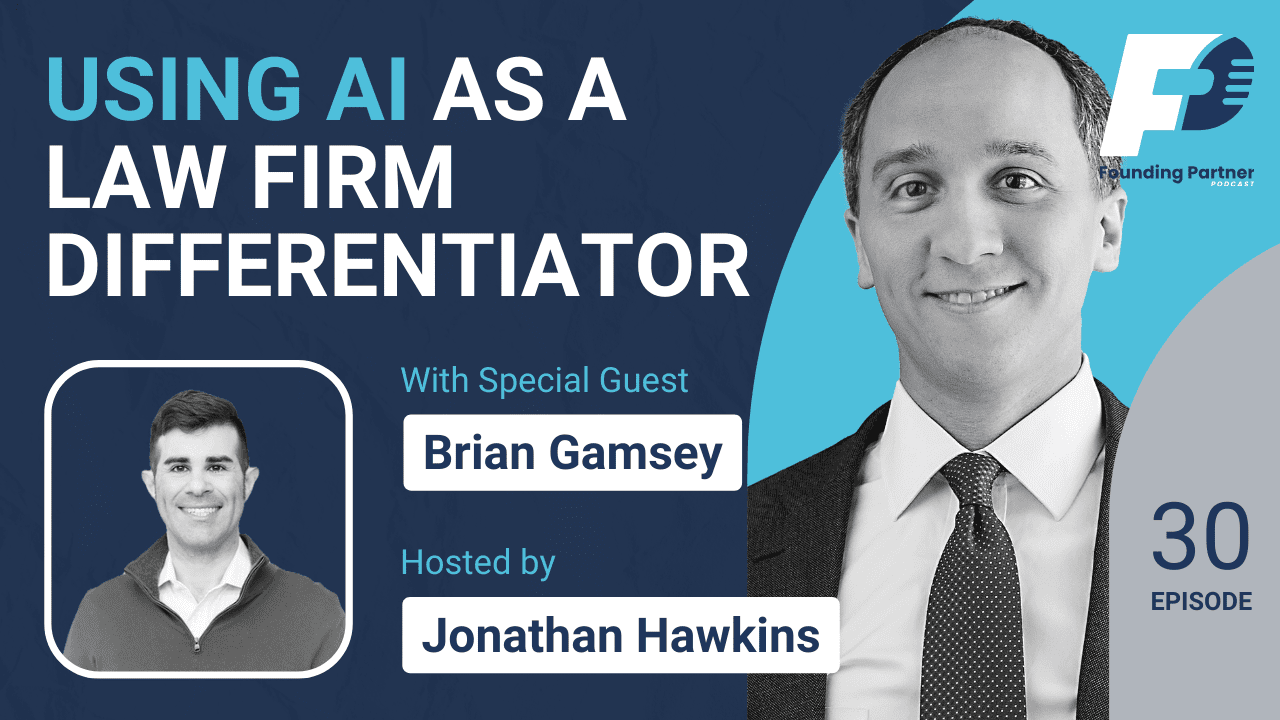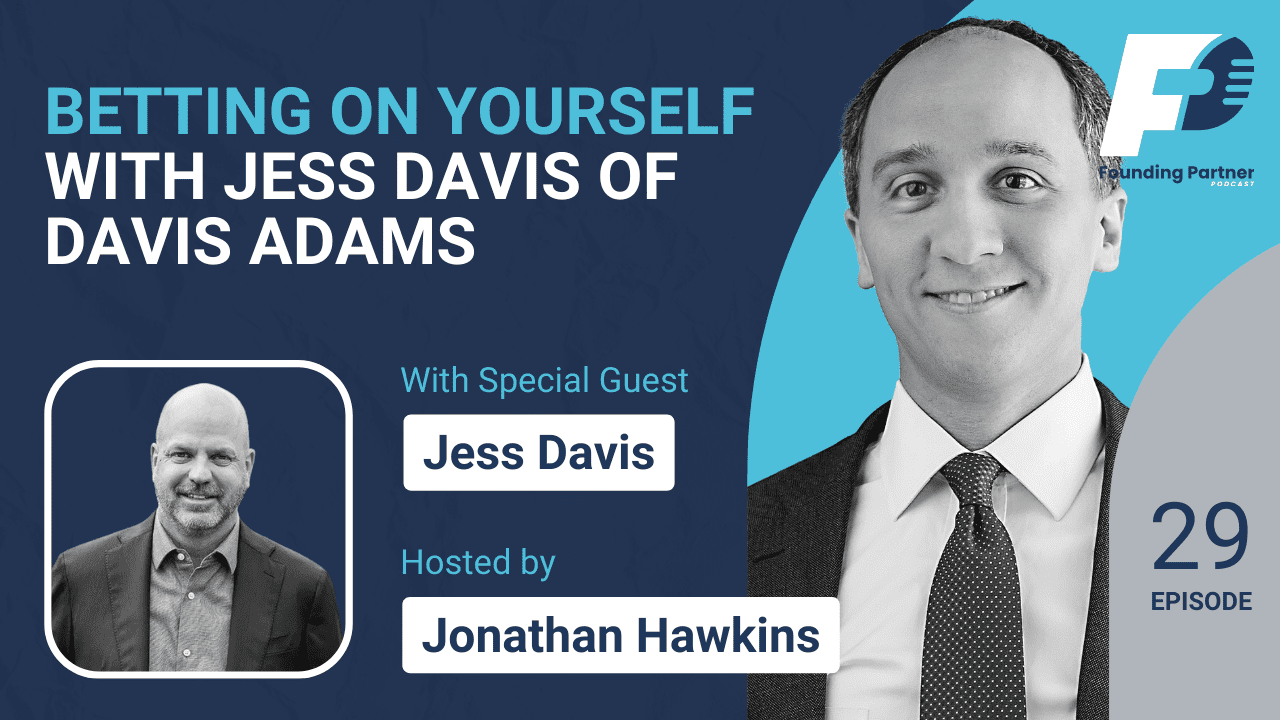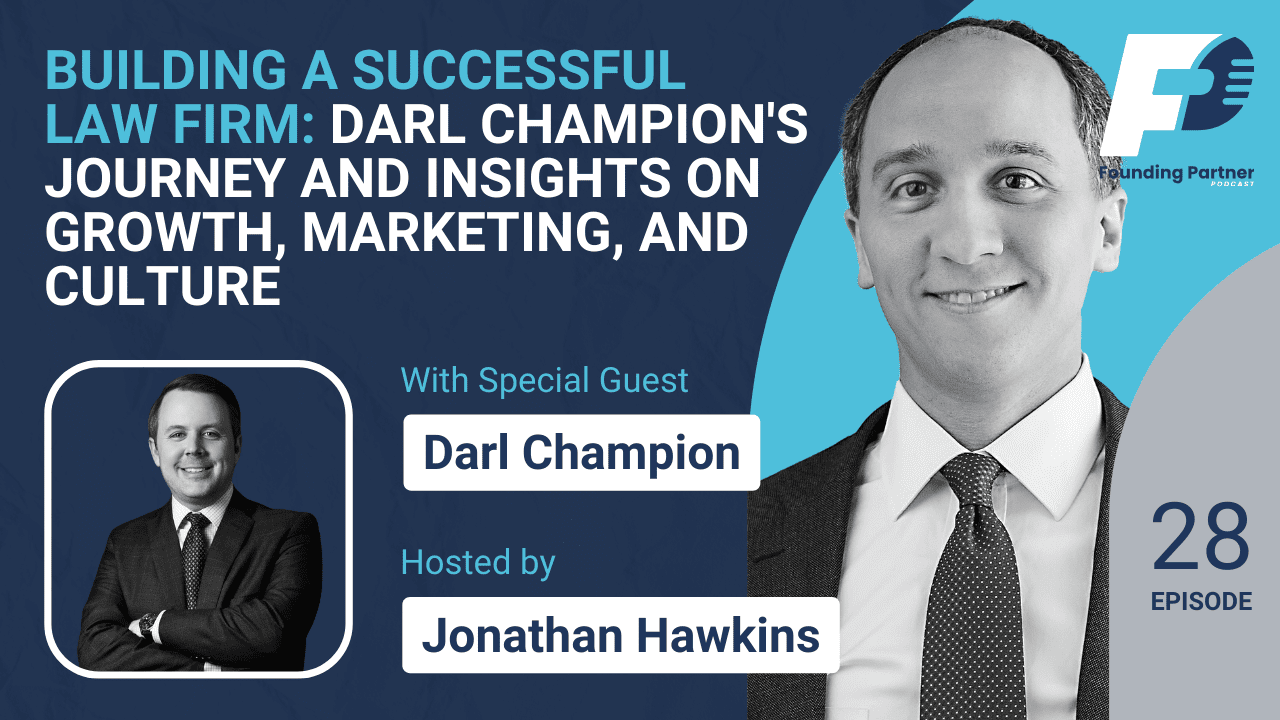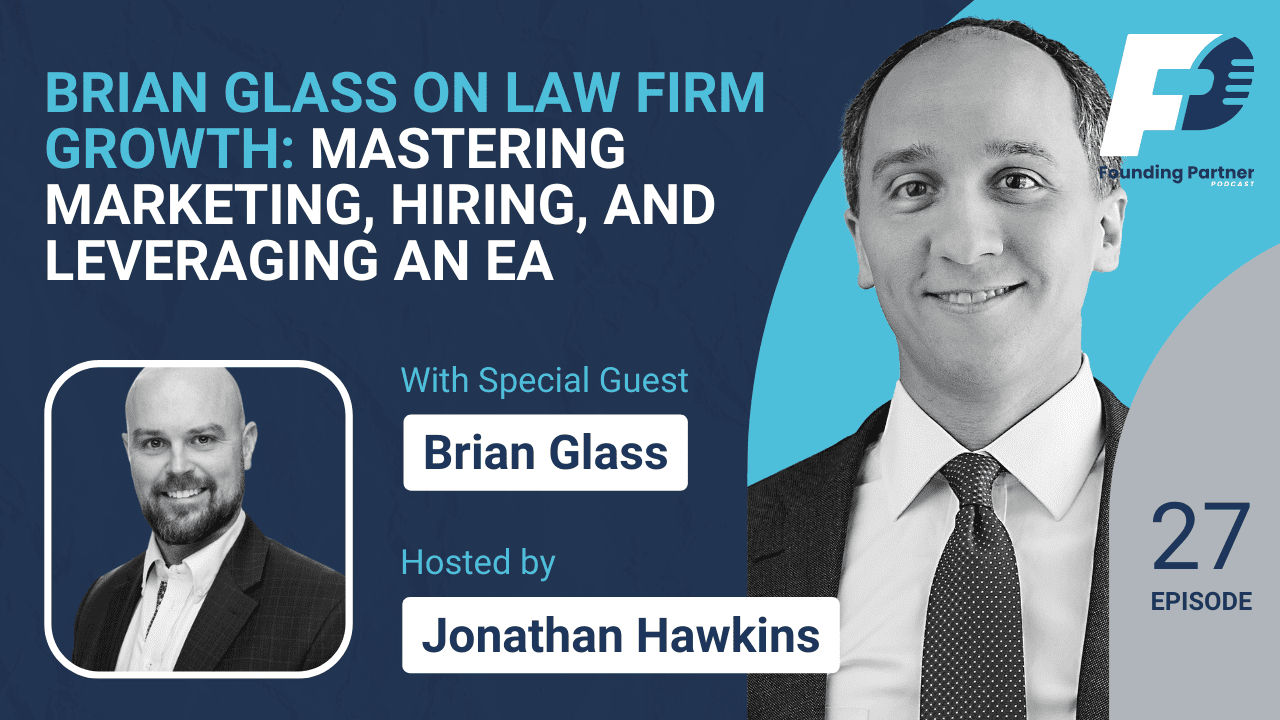Jonathan Hawkins: [00:00:00] you had the kidney transplant. Talk about that. I mean, add to it. I mean, that is crazy. I want to hear about this.
Scott Snelling: you know, I try to do all the hard things at once, man, all the hard things at once. Yeah. So, back in 2009, I was diagnosed with ulcerative colitis and the doc put me on meds and those meds shut down my kidneys. I was the one in a million, right? And so, I knew that I had kidney disease at that point and I was going to need a transplant at some time.
I had an amazing kidney doctor who was all over it you know, testing me frequently. He had me on high dose steroids right away, which saved my kidneys for about 10 years. But yeah as I kind of approached the kidney level, where a transplant was going to be necessary. My doctor was like, I don’t want you on dialysis.
He goes as soon as we get to the point where insurance will pay for a transplant, we’re gonna have you asking anybody and everybody, you know, to go get tested. And so that’s [00:01:00] what we did. And Man, if there’s ever an exercise in humility it’s going and asking people to donate a kidney for you. That is about as humbling as it gets, but the good Lord provided my best friend, Jacob Thompson, and he was an amazing match for me.
My father in law was also a match. Jacob is a little bit younger than my father in law, Gary. And so, yeah Jacob gave me his kidney on October 31st, Halloween morning. Nothing like being wheeled back to the operating room to get your best friend’s kidney on Halloween morning. And at that time his wife was eight months pregnant.
So yeah, just he’s my hero. I try to mention his name and his sacrifice for me every time I can. And he’s doing fantastic. So for anybody out there who’s thinking about donating, absolutely do it. You’re gonna be somebody’s hero. And the the end result for him is he’s had zero issues. And if you donate, you get bumped to the top of the list.
If you ever need anything.
[00:02:00]
Jonathan Hawkins: All right, Scott. Welcome. Thanks for
Scott Snelling: Thanks man. Thanks for having me on. I appreciate it.
Jonathan Hawkins: So, introduce yourself. Tell us who you are and where you practice.
Scott Snelling: Absolutely. I am Scott Snellings. I am a Texas native and our headquarters are here in Frisco, Texas. We also have an office in Sherman, Texas, and hopefully within the next week or so we’ll be opening our doors in Dallas. Snellings law, we, all we do is personal injury. So whether it be roadway incidents like car crashes, buses, 18 wheelers, pedestrians, [00:03:00] motorcycles premises cases.
Or kind of anything in between, as long as it’s personal injury and we can help somebody out, then that’s what we do.
Jonathan Hawkins: So you’re about to have three offices. How many attorneys, staff, how many folks do you got?
Scott Snelling: Yeah, so there’s five attorneys and I think we have seven paralegals slash assistants and then several outside vendors as well. So it’s kind of hard to answer that question especially in today’s world where there’s so many virtual assistants and then outside vendors that you utilize for different processes that you also have to manage.
It feels like sometimes there’s 50 people that we’re managing and sometimes, you know, just kind of the 12 that are under roof.
Jonathan Hawkins: So you’ve got an interesting story that, that I want to explore here, but you know, how long, when did you start your firm?
Scott Snelling: So I came out of law school in 04 and went to work for a fantastic firm, Heartline Dacus doing products, liability defense, and probably [00:04:00] 90%, if not more of what I worked on was General Motors cases. I represented General Motors and and their seat back cases. So if somebody hit a General Motors vehicle in the seat.
What the plaintiff’s attorney is called collapsed somebody got really injured, then those were the cases that I was on. So I had an amazing. Training ground was surrounded by amazing attorneys and got to work on pretty much nothing but multimillion dollar cases. So after doing that for four years, of course, I already knew everything, right?
And so, in 2008, me and another guy at the firm quit our good paying jobs and the worst economy we’d ever seen and decided to go start a plaintiff’s firm up in a very conservative jurisdiction. And in Collin County, Texas. So probably not the wisest decision back then, but you know, as I referenced the other day on LinkedIn, sometimes being naive is your greatest asset.
Jonathan Hawkins: So, did you have kids at the time?
Scott Snelling: I did not, I was married but whenever I started the second firm, Snelling’s Law I did [00:05:00] have two kids. One of them was. I think Jake was about nine months old when I did that,
Jonathan Hawkins: Yeah, that’s, yeah, we’ll get into that. So, so you left your first firm, started a firm with a a partner. What happened there? You guys end up separating or,
Scott Snelling: Yeah. You know, we, I think we just kind of had different visions of where to go. And you know, we said, you know what you do your thing, I’ll do my thing. And we’ve both been really successful in the different directions that we’ve taken. So I think it was a great decision for both of us.
Jonathan Hawkins: you know, people ask me a lot, they say, you know, what causes law firms, partnerships to break apart? And one of my top answers is sort of a divergence in the vision. You know, somebody wants a big firm, somebody wants a small firm, somebody wants to do personal injury, somebody wants to do Something else and that’s huge, you know, visions, obviously you can change over time, but if you don’t have the same at the beginning, you know, it’s not gonna last very long.
So how long were you two together?
Scott Snelling: [00:06:00] So almost nine years and to your point about vision, you know, one of the things that I have a lot of partner here Rocio goes to where, and she’s powerhouse amazing partner, but one of the things that we really made a concerted effort to do is every Monday morning at eight o’clock, we meet at the same coffee shop, Aussie grind here in Frisco, and we talk for about an hour and it’s staying on the same page personally.
So I know what’s going on in her life. She knows what’s going on in my life and we talk about firm stuff. And vision comes up all the time. And so I think really one of the keys to having a solid partnership is communication and staying on the same page. You know, you mentioned visions change. Yeah, absolutely.
Sure. They do. Sometimes they grow. Sometimes, you know, they take a different direction. And I think if you’re constantly communicating on that, then that is a huge asset to the partnership.
Jonathan Hawkins: You know, two things I like about that. One, that you do it consistently and two, you do it [00:07:00] offsite somewhere else.
Scott Snelling: Yeah, because man, if I’m, I don’t know how you are, if I’m in the office. It is dang near impossible for me to get through a conversation any kind of deep work without either somebody coming and distracting me or me willingly getting up and wandering around and looking for a distraction because it’s really hard to think through something.
So being offsite, you know, you can also speak freely. You don’t have to worry about other people listening in. That’s really a concern, but I think you just feel different offsite. You feel less guarded.
Jonathan Hawkins: Yeah. So you mentioned a minute ago that LinkedIn post about being naive. I did see that one and I wanted to ask you about that. Maybe have you elaborate a little bit. How were you naive and would you’ve done it differently? Perhaps if you sort of know what you know now, if you knew it then,
Scott Snelling: Yeah. If I mean, back then, if I knew what I knew now, I never would have done it. Right. Because I would’ve been too scared. I think one of my, one of my, for those [00:08:00] of you who didn’t see it, I mentioned that one of my biggest attributes and starting a new firm was being naive. And what I meant with that was not the fact that, you know, I hadn’t researched things and I wasn’t prepared and I hadn’t kind of run the traps I had, but there were a bunch of things that I just hadn’t, I didn’t know what I didn’t know.
Right. And I think sometimes you make the best progress in life when you just take action. Right. Seth Godin had a calendar entry yesterday on my daily tear off calendar about, Hey, sometimes you just got to take action. And so, you know, I made the jump and yeah, on the way down, I realized just how far it was.
Right. And so I think had I known all of the things that I didn’t know, all of the difficulties that we face. There’s no way I would have done it.
Jonathan Hawkins: and you said you were married, I imagine your wife was supportive and perhaps she had a day job to help.
Scott Snelling: Yeah. So yeah, that was when I was married to my first wife and yeah, she had a solid day job. So [00:09:00] that definitely took a lot of the stress out of it. I’d saved up to obviously knowing that this was coming was super important to me to have. Some operating cash knowing that we weren’t, especially as a plaintiff injury firm, right, we’re not going to get paid right away.
If you sign up a case on day one, chances are, you’re not gonna get paid for about 9 months. So I knew that was coming. So, yeah, that was definitely helpful. But when I started the 2nd firm, you know, when I split with my law partner. I was married to my current wife and we had two, well, three kids.
I have a stepdaughter who is now 17. Back then she was, gosh, I guess about 10. And then I had Olivia who was either two or three and Jake who was probably around one. So yeah, that was a different beast. And I was the sole breadwinner. My mom, or my mom, my wife stays at home with the kids.
And yeah, so that was a bit more stressful really when you have the kids and then you’re the sole breadwinner,
Jonathan Hawkins: And then you had the kidney transplant. Talk about that. I mean, add to it. I mean, that is [00:10:00] crazy. I want to hear about this.
Scott Snelling: you know, I try to do all the hard things at once, man, all the hard things at once. Yeah. So, back in 2009, I was diagnosed with ulcerative colitis and the doc put me on meds and those meds shut down my kidneys. I was the one in a million, right? And so, I knew that I had kidney disease at that point and I was going to need a transplant at some time.
I had an amazing kidney doctor who was all over it you know, testing me frequently. He had me on high dose steroids right away, which saved my kidneys for about 10 years. But yeah as I kind of approached the kidney level, where a transplant was going to be necessary. My doctor was like, I don’t want you on dialysis.
He goes as soon as we get to the point where insurance will pay for a transplant, we’re gonna have you asking anybody and everybody, you know, to go get tested. And so that’s what we did. And Man, if there’s ever an exercise in humility it’s going [00:11:00] and asking people to donate a kidney for you. That is about as humbling as it gets, but the good Lord provided my best friend, Jacob Thompson, and he was an amazing match for me.
My father in law was also a match. Jacob is a little bit younger than my father in law, Gary. And so, yeah Jacob gave me his kidney on October 31st, Halloween morning. Nothing like being wheeled back to the operating room to get your best friend’s kidney on Halloween morning. And at that time his wife was eight months pregnant.
So yeah, just he’s my hero. I try to mention his name and his sacrifice for me every time I can. And he’s doing fantastic. So for anybody out there who’s thinking about donating, absolutely do it. You’re gonna be somebody’s hero. And the the end result for him is he’s had zero issues. And if you donate, you get bumped to the top of the list.
If you ever need anything.
Jonathan Hawkins: That’s awesome. So, so it sounds like you sort of knew at some point. You were going to need this[00:12:00] how much of it or how, in terms of the timeline. You know, starting your firm and knowing when you’re going to have the surgery, did you know before and you just said, all right, we’re doing it anyway. Or did you find out after you started your firm?
Scott Snelling: No I knew I knew that it was coming up. We’d already gone through asking people to get tested and stuff. And then I started my own. So my firm started on September 1st of 2017. And the operation was on October 31st of 2017. So right at two months. I found out that Jacob was approved to give me his kidney because he had to go through significant testing I think at the beginning of October.
They did it pretty quick. And so, yeah, two months after opening my doors, I was handing the keys to a paralegal who I’d known for a month and a half, saying, hey, Keep the wheels on and try not to to screw too much up here while I’m getting a kidney transplant.
Jonathan Hawkins: Yeah. What’s the recovery time? I mean, how long were you out of the office to, I mean, how in the world, this is just amazing to me.
Scott Snelling: So, you know, we were cloud based thankfully. [00:13:00] Right. So I can work from wherever, but I mean, I was in and out of the hospital in 3 days, so. You know, shocking, right? And then I think I was back at the office maybe two weeks later, at least for like half days. So, you know, I’m not that tough. So it’s just, they’re really good at what they do.
And the doctors that I have, dr clintmom I mean, he has an entire hospital wing named after him was just fantastic. Funny story about him real quick. You know, when I woke up from the surgery, right? He said, Hey, how are you? When he came in the room and I was like, I’m really hurting.
Right. He’s like, he kind of looked at me and he’s this German guy with a German accent. He says, well, I did just cut you with a knife. So that’s to be expected. But yeah, you know, the recovery was super fast. Zero complications and was able to kind of get back on the saddle. Really the timing worked out perfectly because starting a new firm, I had cases that I had brought with me.
But clearly my marketing hadn’t kicked in yet. You know, we weren’t signing up brand new cases as the new firm. And so [00:14:00] really it worked out awesome. You know, if I had to go get a kidney transplant, you know, at the end of year one, beginning of year two, that would have been much harder because. Now, you know, I have a team in place, but back then I was still trying to get my feet under me.
I was doing most of the stuff on every facet, right from operations to marketing to administration and HR and all that stuff. So it was, it worked out perfectly, man.
Jonathan Hawkins: and it was just you in a pair of legal.
Scott Snelling: Yeah. Yeah. Just being a paralegal.
Jonathan Hawkins: Wow. You know, it’s funny. You know, I started out in product liability defense too. I went to law school wanting to be a plaintiff’s lawyer. We did Michelin tire defense and this was back when all the Ford rollovers were happening. And so they would sue the car company, maybe a GM or a Ford, and then they’d sue the tire company.
So I went along on a lot of those. But, you know, as fate would have it, I’ve never practiced plaintiff’s law at all. But it’s funny how
Scott Snelling: you’re a curative, [00:15:00] you’re a curative that back in your defense days, right? Like I don’t want anything to do with this.
Jonathan Hawkins: no, it’s not necessarily, you know, I represent a lot of plaintiff’s firms, but and I have a you know, a soft spot, but just the path took me a different direction.
What about you? Did you know that you wanted to be a plaintiff’s lawyer? And did you know that you eventually were going to start your own firm?
Scott Snelling: Yeah, so I never wanted to be a lawyer. I wanted to be a doctor and you know, my first semester at Baylor, I made all A’s and a D and the D was in biology. So I was cured of that pretty quickly. And so I was a psychology major and I really loved it. Absolutely loved it. Had zero interest in the law.
And then my dad was out hunting one day, I think it was my junior year of college. He was out dove hunting and he had on a Baylor shirt and this guy yelled at him. He’s like, Hey, did you go to Baylor? And my dad said, no. And he said, well, come hunt with me. And so they chatted throughout the day and my dad was telling him about me.
And at the end of the day, he said, Hey, if your son wants an internship, have him give me a call. And that was Cass Casterline. He passed away a few years back and he had a [00:16:00] plaintiff’s lawyer’s firm. And so I was like, yeah, you know, I don’t have anything going on this summer. And so I went, I interned for him and I fell in love with it.
We helped these two little girls whose mom and dad had been killed in a crash with an 18 wheeler. And so, you know, I got to see the amazing impact. That you can really make on people’s lives and it wasn’t just sitting behind a desk all day doing discovery work and all that kind of stuff. Kind of like I pictured there’s a ton of strategy to it.
There’s a ton of investigation to it and really liked it. So I turned around and took the LSAT that next fall and got into Baylor. So I did Baylor undergrad and law school and only thing I ever want to do is plaintiff’s law. And so I took a job right, personal injury, took a job right out of law school doing personal injury work on the defense side, always knew I was gonna be playing a lawyer.
And so 4 years in, when kind of the opportunity with the other guy came up, I jumped at it. So it was either go join a firm that did it or go start a firm and do it. And so I took. [00:17:00] That took the route of starting the firm. But yeah if you told me that plaintiff’s law was going away tomorrow I’d probably find something else to do.
I don’t know that I would practice law. This is kind of the sole thing that has always interested me and that I’ve loved.
Jonathan Hawkins: That’s great. You know, Part of the reason I did not go into plaintiff’s law, during law school, all I applied for were plaintiff’s firms, but I didn’t know it at the time, but pretty much they don’t hire anybody straight out of law school, most
Scott Snelling: No, they don’t want to train you.
Jonathan Hawkins: Exactly. They want the defense side to train you first, but not too long.
Cause then you’re not the mindset. Yeah. It’s like if you’ve been on the defense too long, you don’t put your, push your cases and you know, you’re a little more reactive. Yeah. So, okay. So you started out, it was you and paralegal, you had your kidney surgery immediately after you started. And then of course, now you’ve got about three offices and lots of attorneys to take us through sort of how it grew after you got back from surgery. How did you start to grow your firm?
Scott Snelling: Yeah. Huge [00:18:00] part of that is my cousin owns marketing firm, may media, and she has been there for me since day one helping with all the marketing aspects, right. Whether it’s finding the right vendors, whether it’s. Just everything that we create goes through them and just marketing plans and execution.
I’m great on the creative part and the planning part. I don’t like to execute stuff. I like to go on to the next shiny thing. So she really balances me out there and has, is really, you know, a huge reason why we are where we are today. In terms of. So I went from the paralegal to hiring what I’ll call just like an intake specialist.
Now, I don’t know that I called her that back then, but receptionist slash intake specialist. And then the paralegal was doing solely casework. And then, you know, right at five years ago, Rocio joined me and that’s when we were really able to kind of start growing. Ended up hiring another [00:19:00] paralegal.
And then moved into our offices here, got a lit paralegal and the marketing was really taken off and then just started adding team members. Right. And then about, I think it was June of 22, we started with EOS. We hired an implementer and started EOS and that’s the hockey stick. That’s where the hockey stick starts and what that’s really allowed us to do.
Is set the vision, implement the core values and really start being more data driven more metric driven and communicate. You know, we talked a lot, but it was about cases. We never really talked about the business. And so I would say that was probably a massive decision for us was starting EOS.
Jonathan Hawkins: you self implement or did you hire a consultant to help you?
Scott Snelling: So I read EOS, I think in 2018, I think it was the second year. Of the firm in the second year of the firm and [00:20:00] I loved it, loved the ideas, love the simplicity of it and started trying to self implement and certain things got implemented. Terminology got implemented, but nothing really stuck. And sometimes you just got to have that outside person especially when you pay them really good money.
So people are invested to really help talk you through it, hold you accountable. You have to report back to help you develop things, kind of teach you next level EOS. And yeah, that’s been a massively successful decision for us.
Jonathan Hawkins: So, you know, some folks I’ve talked to, some law firm owners that have done EOS, you know, they, they sort of, at least their opinion is you’ve got to have sort of a minimum number of folks really before you can start doing that. I don’t know if that’s correct or not. You probably need more than one, but how many folks did you guys have?
When you sort of started,
Scott Snelling: We probably had eight or nine. That’d be my guess. And I would push back a little bit on that.[00:21:00] I think no matter what size you are, read Traction, right? Traction lays it all out at the 30, 000 foot level. And I think in a combination with some other things, you know, Vivid Vision is an amazing book, you know, the E Myth.
I think you kind of, you educate yourself on all the different facets, right? And so then what you do is you start developing, okay, well, what do I want? Because that’s the perfect time to be implementing your vision is right from the get go. So. You’re building exactly what you want to build. First off, you know what you want to build, and then you start building that with the end in mind.
I think the biggest mistake that law firms make is they just grow and they don’t have a real idea as to where they’re headed. And, you know, that’s something that you want to be developing before you even start your own law firm, right? Like if you’re at a law firm right now and you know that you’re going to do it, those are the things that you should be talking about or thinking about.
What do I want to build? What kind of clients do I want to serve? Who’s my avatar client? How am I [00:22:00] going to structure this? What are going to be the goals? What is my marketing going to look like? All those kinds of things which EOS absolutely addresses. And so I think that’s a great spot to start with before you even bring or hang your own shingle.
And so that way you have a running start. Now, as your team gets bigger, you may need to bring in an integrator to really help you. You know, do the full thing. But from the get go, yeah, I think traction is absolutely helpful.
Jonathan Hawkins: so,
Scott Snelling: with those other
Jonathan Hawkins: so how many folks are on your, I know they sort of, you have a leadership team that sort of helps implement it. How did you pick who’s on the leadership team? And has it changed over time?
Scott Snelling: I, yeah, so I had there were four of us to begin with. Now there’s three. And essentially it’s me as kind of visionary, if you will. And then we have our head of legal operations and our head of operations, non-legal operations, essentially. Those are the three of us. It may grow at some point, but I think having three people really has [00:23:00] its strengths, especially when there’s 12 of us, right?
I mean, you don’t want half of your team on the leadership team, but I think with three people, it’s way easier to make decisions. It’s way easier to address issues. And your. You can turn the ship really quickly, right? Whereas the bigger your leadership team, the more opinions people feel like they need to put out there.
And I feel like with our leadership team, we communicate so often at our weekly meetings that when we get to our quarterly meetings, when we get to our annual meetings, we’re all still on the same page that we just knock it out. And I think that’s been really helpful for us. So, I mean, I would advocate for a smaller team.
We don’t really follow necessarily the stringent traction model where you have your visionary and your integrator, and then your head of, you know, marketing and operations and HR and finance. We don’t do that. One, we’re not big enough to do that, but two, I don’t know. I think you, you lose a lot of [00:24:00] speed and efficiency.
Yeah. You may gain deeper insights from that, but I think where we are right now, speed is more
Jonathan Hawkins: Yeah, not yet is the
Scott Snelling: Not yet. Yeah. That’s right.
Jonathan Hawkins: So, so you said it was the EOS was sort of the hockey stick. I guess part of that was vision. What other aspects of it in your opinion sort of helped. Fuel
Scott Snelling: Core values. Core values. I tell every single person that interviews with us and starts with us that my number one job at the firm. Is to guard our culture. And so, you know, we came up with our core values during EOS. You know, it’s not, they’re not aspirational, right? This is like actual core values.
This is what the people that we’ve built, this team that we’ve built actually exhibit and, you know, it’s not just a list. In fact, you’re not going to see any marketing materials. Well, that’s not true. I think we post them on social media and it’s on our website, but we have posters hanging around, things like that.
But what we did is we were very intentional about it.[00:25:00] We, every quarter we do quarterly reviews. We just calendared them today for the last quarter. And part of our team’s bonuses are based on core values. Are you exhibiting our core values? Whenever we interview people, we ask them kind of open ended questions, getting at our core values to see if it’s, you know, see if they’re likely fit.
When we have to discipline people or. Let people go. A big part of that is our core values. You can be a great worker, but if you’re not within our core values, then you’re just not right for our firm. And so, you know, we’ve tried to, we have a Slack channel for core values where people give shout outs and we count those and we go through ’em at each team meeting.
Just so that there’s something always there with our core values just to make sure that people have ’em ingrained in their head and interacting according to those.
Jonathan Hawkins: Yeah, I think that’s huge, especially on the sort of the hiring front, you know, use it as a screen on candidates and that sort of thing. I’m [00:26:00] curious. You said you bonus on the core values as much as you’re willing to share. How do you quantify that? For for and turn it into a bonus metric.
Scott Snelling: Yeah. So, basically the way our, ours is set up is we kind of a two thirds bonus based on firm performance which we’ve kind of changed over the years to give the team more control or being able to meet those bonuses. And then we do one third based on personal performance or individual performance.
And we have, I think, four or five different categories. You’re catching me at the end of the quarter here. I don’t have them all memorized. And so one of those categories is core values. And so we’ll look at, did the team shout you out on anything? What have we observed over the last quarter? You know, in our L10s, there’s employee headlines.
We try to make a conscious effort throughout the week if we see somebody exhibiting that we included in our headlines for EOS. So we’ll go back and we’ll look at all those. And then, you know, if somebody got written up or if we had to address an issue with somebody, you know, that and [00:27:00] that has to do with our core values, then it would be addressed there.
And so you get points for each of the thing. And so. If the, I think the total points you get is 20. And so if you get like 20 points, you get your full bonus for that one third of it. And so then it scales down from there. So that’s how we’ve incorporated it.
Jonathan Hawkins: That’s cool. I like that. You know, I’ve talked to a lot of folks and read a lot about core values and, you know, the old corporate speak core values, you know, don’t really mean anything and nobody understands them. I think the fact that you guys have a. Shout out channel. It demonstrates, you know, behaviors and examples of what those are.
So then people know what they are and it reinforces, I think that’s smart.
Scott Snelling: Yeah, man, when I first started reading about core values, I’m pretty sure I rolled my eyes, maybe even sighed like, come on, man. And I was like that, I was like that for a long time. And really it was until EOS and we actually went through it and then took the next step [00:28:00] of making sure they meant something.
Right. Anybody can come up with core values. Maybe they’re good, maybe they’re not, but unless you actually do something to make sure that they’re implemented and they’re followed and people know what they are then yeah, man, I would continue to roll my eyes because unless you’re doing those things and they are pointless, just a, an exercise in futility, quite frankly.
Jonathan Hawkins: Yeah. So I want to shift a little bit. You know, you have two separate offices, you’re about to open a third. That’s something I’m very interested in. So, you know, it’s one thing, you know, it’s hard it’s hard to scale a firm, but it’s difficult to do it in one location. When you add another location, it just adds a level of complexity.
And now you’re about to add another you know, talk me through, you know, sort of your thought process maybe, and then how you did it the first time, what you learned and the mistakes you’re correcting, at least on this one, which I’m sure you’ll make a few more mistakes in your fourth office.
You’ll fix those. Talk me through that a little bit.
Scott Snelling: Going to my [00:29:00] LinkedIn post of today. Yes, I will pay plenty of tuition as I already have in terms of opening new offices anytime we’re making mistakes, we call it tuition, right? You gotta learn your lesson from it. So the, obviously we have our headquarters. And then the next office that we opened was Sherman.
I
Jonathan Hawkins: And how far is that from your headquarters?
Scott Snelling: so door to door is about 45 minutes. But it’s very different in terms of, you know, Frisco is a thriving. Suburb of Dallas Cowboys had world headquarters. We have the PGA here now, and they’re opening up a universal studios. So just a massively growing community.
Sherman is headed in that direction, but they’re not there. They probably have about 150, 000 less people and the, the demographics are pretty different. It’s also way more country if you will rural which means, you know, lots of two lane roads where people are driving really fast and bad [00:30:00] things happen, right?
But the way that we approach the two markets has probably been the biggest learning experience for me, you know, in a more urban population, your digital marketing, your print media, and all of the other. Avenues tend to work better and in a more urban, I mean, in a more rural area like Sherman right now.
It’s really more about relationships, man. It’s about relationships. It’s about the older trusted authorities like radio and TV. And so it takes a different approach. You know, like we, we do print ads and local publications both in Sherman and Salina, which is kind of in between Frisco and Sherman.
And so I think really paying attention. To how people quote unquote shop for lawyers is huge and something that I’ve kind of missed on. It was a swing and miss when we first came up there, but we’re working on doing a [00:31:00] better job of that now and really becoming a part of the community, which is what we want to do anyway, right?
That’s why we have an actual office there. We don’t just do digital advertising. We want to be a part of the community. And same thing in North Dallas. You know, we want to be involved in, you know, the schools and the government, the city government, and all of those things around us and in the boards and in the charitable organizations and really give back to the community, right?
We don’t want to be the takers. We don’t want to be the people coming in, taking cases, and then just kind of. Flying through and back to our big corporate headquarters, we want to actually dig in and help the community thrive.
[00:32:00]
Jonathan Hawkins: you have people that are actually in the office every day? How do you do that? And then
Scott Snelling: yeah. So,
Jonathan Hawkins: you manage that? Are you driving back and forth or how do you do that?
Scott Snelling: yeah, so I’m in Sherman twice a week. We did have someone there five days a week. And then she ended up having to move to Nacogdoches. So she’s now a virtual employee. So we’re trying to fill that spot in Sherman where we are there five days a week. But right now I’m there two days a week and someone else is there usually two days a week.
So we’re open most of the week and then with Dallas we’re going to have two people there full time and honestly, Dallas was a function of office space, right? Because we have a lease here, we’re out of space, man. And so we can go sublease this spot and then find another one for significantly more [00:33:00] money, or we could go to Dallas where we wanted to develop a presence anyway.
Office space is cheaper, and you know, we’re in an area where we already have, you know, influence and contacts and can build. So we decided, yeah, let’s go do that. Let’s go, you know, build another digital presence out there and then be able to serve an even larger community.
Jonathan Hawkins: So how far is Dallas from your other locations?
Scott Snelling: So, so Frisco would be central. From Frisco to the Dallas office would probably be like 25 minutes. And you’re on highways, so that could easily stretch into an hour and a half if there’s a big crash. But yeah, about 25 minutes, I
Jonathan Hawkins: So, are you planning, are you thinking about, I guess you got to open Dallas first, but you know, you’ve got EOS. I’m sure you’ve, you guys have already thought about the future. Are you looking to add more offices and then would you go farther than just sort of the Dallas area where you are now?
I’ll
Scott Snelling: mean, I would say those options are on the table. That’s more like, Hey, let’s really, let’s figure out the [00:34:00] model, right? Let’s figure out how to do this, do it well and do it efficiently. Make sure that we’re really serving the communities that we’re out to serve. I hate growth for growth sake.
I’m perfectly fine having three offices for forever, right? As long as this law firm exists, if the business grows and there is a need and we can really fill that need, then yeah, we’ll grow wherever that is. Obviously we have eyes on different markets to see, okay, well, where’s there a need? We have eyes on, you know.
All kinds of different things that we could jump into, but you know, right now it’s about doing it really well and being a real asset for every community that we do have an office in.
Jonathan Hawkins: tell you, you know, Texas, I mean, you’re in the middle of it, but it’s growing big time. Everybody’s moving there, right?
Scott Snelling: Yeah, that’s one of the reasons, you know, that we also picked Sherman too, [00:35:00] is, you know, they’re about to blow up you know, TI, Texas Instruments, his building, billion dollar facility up there. And there’s about five or six other headquarters going in up there and they’re finishing the highway infrastructure up there right now.
And so, yeah, getting in kind of early and getting that footprint down and starting to develop all the relationships. You know, and Sherman’s a special place for me too. We had kinfolk out there. I learned to drive on Sherman roads. I was probably 12 pickup truck and, you know, we go dove hunting out there with family and we went out there every Thanksgiving.
And so I’ve always loved that area. And so it holds a special place for me too.
Jonathan Hawkins: So shifting again another LinkedIn post, maybe from, I don’t know, within the last week or so. You talked about your coaching stack. And I thought that was a really insightful. I want to hear about that. You’ve got different coaches for different things. And tell us about, I mean, obviously you find them helpful.
I do too. But I’m curious if [00:36:00] you’ll expand on that a little bit.
Scott Snelling: Yeah. The idea kind of came from. Everybody was talking about tech stacks. And in fact, I think that morning Ryan McKean had written a post on what his tech stack looks like. I could be wrong on that, but I think that’s what kind of kicked it off. And I was like, well, I got a coaching stack. I’ll talk about that today.
And so, yeah, you know, I’m a huge proponent of of coaching. If Michael Jordan, if Wayne Gretzky, if Tiger Woods, they all need coaches, then who am I to not need a coach? And so it was actually last year. I just kind of started thinking, okay, you know, if I really want to be at my absolute best and every aspect of my life, how would I go about doing that?
Right. How would I grow? How would I excel? And I was like, well, I was already in a mastermind group and I already had a Charlie man as my business coach. And I said, you know, Those have really helped me grow in a really efficient and fast way [00:37:00] by kind of opening my mind to different things and being able to learn from others mistakes and being able to be inspired.
So I said, okay, well, what other aspects of my life could I obtain coaching in? Okay, well, fitness, nutrition, that’s pretty easy. Right. Like lots of people have personal trainers. And so I did some research and found one that would work for me on both those fronts. And it’s been great. You know, I’m feeling good.
I’m in, you know, good shape, probably best shape I’ve been in, in a long time and aiming to really grow there. And then started going and seeing a psychologist. I’d never had any counseling before, and so I was like, okay, well, that would be really cool. Like, what is going on in my head that is really limiting me that I don’t even know it’s there.
Right. And I’ll give you the exclusive kind of how I arrived at that was always encouraged clients [00:38:00] to. Go see a counselor, right? I mean, a lot of our clients have been in horrific crashes or had horrific injuries, life altering injuries, and they deal with the physical part of them, man. Give me a broken arm over anxiety and depression every day of the week and twice on Sunday.
It is so traumatic to so many different people, yet counseling can help. Be such a huge help. And, you know, I still think there’s a massive stigma on it today. That there just shouldn’t be right. And so I always dreaded me advocating for counseling. And then a client asking me, have you ever had counseling and saying, no, like I would always get that feeling in my stomach every time, because I knew somebody was going to ask me.
And then one day they did and I said, why am I worried about this? You know, I could use it. I think everybody could use it. I want to go find somebody and I want to address [00:39:00] things that are holding me back. What are my limiting beliefs? Because we all have them, right? And so I did my research. I found a lady and we got started.
I don’t know. Maybe a couple of months now, but I love it. I absolutely love it. It’s a really positive experience. It’s really helped me draw some connections that I never would have seen. And that’s one of the things I’m most excited about moving forward. So I’ve got those things covered. So I’m in a mastermind group, great legal marketing.
Same one as you. And so got that amazing group. And then I am in the, I think I called it a challenge club in my post Epic grit club, and that’s basically a bunch of super motivated. optimistic people who want to challenge themselves to go further, right? To continue to develop grit in all aspects of their lives.
And I think, you know, [00:40:00] when we’re in school, you know, we have that hunger to accomplish, you know, to graduate, right? And then when you’re early on in your career you’re hungry to. Prove yourself and then you start your firm and you’re hungry to get that off the ground. And I think along the way, you know, we can lose that resiliency or that grid in our lives in different areas, right?
Maybe when you’re in school you’re not focused on your health. And, you know, a long run seems awful and you just don’t have the ability to get through it. Maybe when you’re more established in your career, you don’t have that same hunger you did earlier and things you could have overcome when you were younger, you just.
You don’t, you just bow out. And so I don’t ever want to get to the point where I start going backwards on that grid scale. I want to always be moving forwards. And so that was a really cool I’ll call it a challenge club that I joined. And so I’m gonna be working with a real estate coach. I’m going to be working with a speech [00:41:00] writer on content and delivery.
Cause I want to start speaking more. And so, yeah, those are the people that are in my coaching stack right now. And more on the horizon. Man, I can’t get enough. I want every aspect of my life. I want to where I want to grow. I want to have a coach. So I’m learning Spanish right now. I’m using Duolingo, but I feel Spanish coach or tutor in my future
Jonathan Hawkins: yeah, I love it. That’s awesome. You know, the epic group or whatever you call it, the
Scott Snelling: I think great club. Yeah.
Jonathan Hawkins: you know, yeah. You know, you’re building a firm, you’ve built a firm and, you know, it’s sometimes you’re going, you know, 90 miles an hour and you’re going forward and every now and then this, at least for me, you take a break and you’re like, oh, crap, what am I doing?
Am I messing up here or, you know, you sort of get paralyzed, but if you’re in a, you know, this epic grit club, you know, that kind of thing, where if you push yourself in other areas, gives you the confidence probably to keep pushing. And every other area,
Scott Snelling: Yeah. You developed those mental assets, [00:42:00] right? So, you know, I ran my first half marathon last year in Fort Worth. I’d never run that far in my life and it sounded just crazy, right? 13. 1 miles. I’d run five Ks before. And I, my, one of my best friends, Marcus Brock kind of got me into, all right, let’s do this.
And so put it on the calendar. Well, when it’s on the calendar and you have a buddy who is going to be running by your side, like I’m not going to, I’m not going to fail. So I started running and you know, when I when I crossed that finish line at 13. 1 miles, I had an immediate mental asset that I can go back to in any long runs that I have now.
Hey, look, man, you’ve run 13 miles before you got this. And other aspects too. Like, Hey you’ve accomplished this big thing that seemed, you know, unattainable. And I can go back to that and at the end of this year, I’m gonna have another mental asset because in fact, yesterday Charlie and I just signed up for the Marine Corps Marathon
Jonathan Hawkins: uh, full marathon,
full marathon this
Scott Snelling: out there so y’all can hold me [00:43:00] accountable.
Jonathan Hawkins: When is it and where is it?
Scott Snelling: Yeah, it’s, it’s in DC we get to run through the monuments and all that, so it’s gonna be really cool. And then it’s in the, at the end of October. So yeah, it’s going to be it sounds crazy to me right now, quite frankly, and I’m gonna have to start training, you know, in the Texas summer.
So yeah, I really bit it off on that one.
Jonathan Hawkins: Well, now you got to do it. You’ve announced it.
Scott Snelling: I have. I have. Yeah, putting it out there. So you’ll hold me accountable.
Jonathan Hawkins: nice. So, you know, a couple other things here. I know you’re active on LinkedIn. What other, and I know you have a podcast. We can talk about that too, but talk about sort of your marketing stack that you got your firm marketing stack and then you got your marketing stack.
Let’s talk about yours. And what kind of stuff you do?
Scott Snelling: Yeah. So for me I participate a lot in the firm, right? So recording videos helping with content ideas. Pretty much all of our social media, I have some sort of. Hand in, right? Whether it’s 30, 000 foot view or whether it’s actually having to go to the studio and record stuff[00:44:00] for me personally, I would say I got, I don’t really do much personally other than LinkedIn and LinkedIn was something that, man, I picked up here and there, but I was never into it.
Right? And then I started A lot of the mastermind guys were jumping in and, you know, once they were consistent for six months, a year, things really started to happen for them. And so, I think a lot of why I never really got into it is the intimidation factor, right? You can post pictures on Instagram, you can have funny little jokes or updates on Facebook, but you know, LinkedIn, man, that’s the professional place and it was boring.
Right. People will post, Hey, I won this award or I got this promotion or now I’m working here. But I think LinkedIn has really changed. And so the more I got in there and started just trying to find my way meeting people like you through just reading different posts and commenting on them [00:45:00] and then trying to say, okay, you know what?
I have an idea for a post. And then I’d put it together and it’d sit there for four or five days. And finally I would hit post. Right. And then you wouldn’t get much of a reaction because you weren’t really connected with anybody. So then it would be frustrating and that would go on and off and on and off.
And then finally I made the commitment to, okay, I’m going to really take this seriously. That was probably about six months ago. And, you know, I don’t post daily but probably two, three times a week I interact daily. And for me, like that’s been a massive I would say benefit because I’ve gotten to meet a ton of really cool people yourself included.
And it’s amazing kind of the different areas that you end up in that you really didn’t see. As symbiotic, if you will, but all of a sudden this whole network just kind of starts to create itself and you grow and you start meeting all these different people and you can really see [00:46:00] where the payoff is headed, right?
So, yeah, it’s a lot of work, but I enjoy it and it’s kind of a, an avenue to flex my creative muscle, if you will, and it made me think outside the box,
Jonathan Hawkins: Well, I’ll tell you, I’ve had a similar experience. I thought LinkedIn was boring. I thought it was sort of a joke. Someone encouraged me to get on there and I’ve been on there consistently. And, you know, you get to meet a lot of cool folks. You get to, you get different perspectives for anybody out there that’s not following you.
I encourage them to do so your stuff lately has been really good. And you found the voice and I, you know, it was hard for me at first and, you know, some days are better than others, but I feel like the ideas, the more you do it, the more ideas start to flow and then it just gets easier but you’re putting out some fire.
Content out there right now. So keep
Scott Snelling: Well, thank you, man. I appreciate that. And I love tuning into yours daily too. I was like, anytime I see your your name and picture pop up, I’m like, Oh, I’m going to read this one. This is going to be a good one.
Jonathan Hawkins: I’m going to start, I’m going to start experimenting, get a little edgy. We’ll see what
Scott Snelling: There you go.
Jonathan Hawkins: what happens.[00:47:00] But so yeah, so you got a podcast too. Let’s hear about that. Let’s plug that.
Scott Snelling: Yeah. So it’s called the driven crowd. Premise is driven people learning from other driven people. And really it started out as a way for me to add some immediate value to people I wanted to create relationships with. So whether it was attorneys that I wanted to get to know better, whether it was people in Frisco or Sherman or wherever that I wanted to get to know, I could invite them on the podcast and they would have immediate value provided right there.
Then we post the podcast, we take clips out and then we push it out on social media and we’ll put money behind it sometimes to really push their name out there. Right. And so I’m a huge believer in when it comes to networking, you got to provide value. Be the first one to provide value. Don’t be a taker.
And so, I’ll usually, you know, buy lunch afterwards. And so that’s two hours of getting to sit down with somebody and talk formally and informally. [00:48:00] And by that time, if I’ve spent two hours with somebody, you know, I should know a lot about them and be able to really continue to develop that relationship.
So, that’s how it started. And then as we’ve kind of gotten more traction, I’ve had people reaching out, wanting to be on the show and kind of bigger audiences, right? And LinkedIn has been fantastic for getting guests as well, super interesting people who do any number of different things. Some people do jobs that you wouldn’t even think were out there.
So that’s been really cool to watch it grow and kind of have different content as well.
Jonathan Hawkins: So we’ll be sure to put a link in the show notes to your podcast. I encourage folks to go check it out. It’s really
Scott Snelling: Awesome. Thank you.
Jonathan Hawkins: So, real quick we’ll wrap it up here and shortly, but for folks out there, you know, Thinking about starting a firm or maybe they’ve started one of their sort of in the early days any, you know, pieces of advice you might give one or two big things to them as they look forward to try to grow or whatever.[00:49:00]
Scott Snelling: yeah, you know, I think having the vision first and foremost, right, what are you trying to build? So many people end up building firms that I don’t like. Because they didn’t intentionally build it. So what are you trying to build? Get clear on that. Put your list together. Go through every single person you know and create your list.
That’s your starting point. And then each year you should be growing that list. Your network is everything. Those are the people who are going to refer you cases. Those are the people who are going to support you in other ways. Those are the people who are going to tell people about you. So grow that list and then figure out how to best use that list, right?
Whether you segment it into, okay, these are the attorneys, these are the other professionals, these are friends and family and figure out what can you provide to your list that will enrich their lives. Right. Maybe it’s a newsletter, maybe it’s a video, [00:50:00] maybe it’s gifts. So really working on that list, working on your vision and then have some sort of a framework as to how you want to operate, right?
You got to know your avatar client. You got to have a marketing plan to go get your avatar client and then you got to have a way of operating. Okay. How am I going to handle the work when it comes in? And so all those things can be done before you ever hang your shingle, right? And so I think working through those things will give you a gigantic head start from day one.
Jonathan Hawkins: All right, so this might be a tough question. You sort of alluded to this earlier. But let’s imagine there’s no such thing as plaintiff’s personal injury lawyers anymore. So you can’t do this. What would you be doing?
Scott Snelling: I wanted to be a fireman. I got my EMT certification in high school and absolutely loved it. So I wanted to be a fireman. I don’t like heights. So that was a bit of an issue. So I wasn’t doing this. [00:51:00] Man, I’d probably be, I’d probably be building some other business. You know, my first passion was as a personal injury attorney.
I still love it. I love the fact that we get to make a massive difference in people’s lives. We get to be there for people. A lot of them, it’s the worst moment of their lives. Maybe a loved one’s died. Maybe they’ve suffered a catastrophic injury. Maybe they’ve never been through the process before, and it is, it’s tough, man.
The personal injury process here in Texas, not easy. And so we get to have a really massive impact on their lives, which I love. As I started Snelling’s Law, you know, I have no business background at all. I was a psychology major and I never stepped foot in the business school. And so I really had to dig deep, man.
I asked trusted business people for book recommendations, bought every book that they recommended, and then if it was recommended by more than one person, went to the top of the list and I read on everything from marketing and [00:52:00] leadership to operations, to finance, all those things. And then, you know, join the mastermind group and all that.
So. I found a second passion in business. I love it. I love the strategy. I love the team that we build. I love, man, I come to work every day excited. So I would probably be doing some other kind of business building if it wasn’t for If it wasn’t in the law,
Jonathan Hawkins: So that leads to this question. Now sitting here today, do you identify more as a personal injury lawyer or more as a entrepreneur business owner?
Scott Snelling: I’m an entrepreneurial personal injury lawyer, man.
Jonathan Hawkins: Split the baby.
Scott Snelling: Yeah, no, I mean, based on what I do on a daily basis, probably more of an entrepreneur but I’m still involved in, we do an attorney round table every week where, you know, we talk about the cases. We talk about strategy. I’m involved in helping to train.
I’m involved in a lot of the, I [00:53:00] wouldn’t say the day to day stuff. You know, I’m not really taking depositions. I may help. Prep help focus groups. I help with the kind of the upper echelon type things if I need to. But more of what I do is the marketing, the running, the business, the strategy for the business and handling anything and everything.
It feels like on some days. But I’m working on getting back to the 20 percent that I’m the best at we’re actually just onboarded an executive assistant today. So that’s my Christmas present is cause I got an executive assistant.
Jonathan Hawkins: Nice. So, so, thank you for joining us today. You know, I think. If you can grow your firm, you know, start and grow a firm like you have in the midst of an organ transplant anybody can do it. And people, there’s no excuse for other folks. So, you know. To end, you know, where can people find you?
Is there anything we talked about your podcast and is there [00:54:00] anything else you want to plug
Scott Snelling: Yeah. I’m not, you know, my podcast LinkedIn is Scott Snellings and then Instagram, Facebook is Snellings Injury Law.
Jonathan Hawkins: and what’s your real quick your websites, just Scott Snellings or Snellings Law.
Scott Snelling: SnellingsInjuryLaw. com.
Jonathan Hawkins: Okay, well, great. Well, I appreciate you joining us and look forward to seeing you on LinkedIn.
Scott Snelling: Absolutely, man. Thanks for having me on.
[00:55:00]

